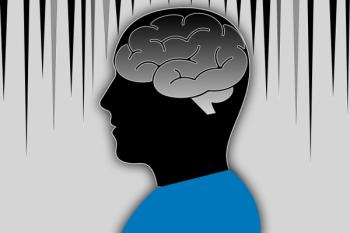
- Vol 38, Issue 7
Prognostic Considerations in Anti-NMDA Receptor Encephalopathy With Psychiatric Manifestations
This CME covers how CNS-related psychosis may require medical interventions beyond antipsychotic and other psychotropic medications.
CATEGORY 1 CME
Premiere Date: July 20, 2021
Expiration Date: January 20, 2023
ACTIVITY GOAL
The goal of this activity is to help psychiatrists recognize and treat autoimmune encephalitis, despite the fact that it will often initially present as psychosis.
Learning Objectives
After participating in this activity, you should be better prepared to:
1. Describe the prognostic factors for anti-NMDA [N-methyl-D-aspartate] receptor encephalitis (ANMDARE).
2. Conduct a clinical workup and treatment plan for recurrent ANMDARE episodes.
TARGET AUDIENCE
This accredited continuing education (CE) activity is intended for psychiatrists, psychologists, primary care physicians, physician assistants, nurse practitioners, and other health care professionals who seek to improve their care for patients with mental health disorders.
ACCREDITATION/CREDIT DESIGNATION/FINANCIAL SUPPORT
This activity has been planned and implemented in accordance with the accreditation requirements and policies of the Accreditation Council for Continuing Medical Education (ACCME) through the joint providership Physicians’ Education Resource®, LLC, and Psychiatric TimesTM. Physicians’ Education Resource®, LLC, is accredited by the ACCME to provide continuing medical education for physicians.
Physicians’ Education Resource®, LLC, designates this enduring material for a maximum of 1.5 AMA PRA Category 1 CreditsTM. Physicians should claim only the credit commensurate with the extent of their participation in the activity.
This activity is funded entirely by Physicians’ Education Resource®, LLC. No commercial support was received.
OFF-LABEL DISCLOSURE/DISCLAIMER
This accredited CE activity may or may not discuss investigational, unapproved, or off-label use of drugs. Participants are advised to consult prescribing information for any products discussed. The information provided in this accredited CE activity is for continuing medical education purposes only and is not meant to substitute for the independent clinical judgment of a physician relative to diagnostic or treatment options for a specific patient’s medical condition.
The opinions expressed in the content are solely those of the individual faculty members and do not reflect those of Physicians’ Education Resource®, LLC.
FACULTY, STAFF, AND PLANNERS’ DISCLOSURES AND CONFLICT OF INTEREST (COI) MITIGATION
None of the staff of Physicians’ Education Resource®, LLC, or Psychiatric TimesTM, or the planners or the authors for this educational activity have relevant financial relationship(s) to disclose with ineligible companies whose primary business is producing, marketing, selling, reselling, or distributing health care products used by or on patients.
For content-related questions, email us at
HOW TO CLAIM CREDIT
Once you have read the article, please use the following URL to evaluate and request credit:
In recent years, a growing body of literature has described autoimmune encephalitis as an important, if infrequently seen, cause of subacute onset of psychotic illness in patients. One of the important syndromes in this group is anti-NMDA (N-methyl-D-aspartate) receptor encephalitis (ANMDARE).1-3 As patients experiencing
Psychotic and depressive illnesses are common in the population, compared with ANMDARE. Consequently, psychiatrists must decide which patients warrant consideration of ANMDARE and the associated diagnostic studies, which are quite detailed and not part of a typical workup for psychotic and depressive disorders. Three broad areas can guide the physician: atypicality of presentation, comorbid neurologic symptoms and signs, and other systemic medical comorbidity commonly reported in ANMDARE. Ultimately, clinical intervention, treatment approaches, and surveillance for recurrence and prognosis will need to be considered.
Presentation and Diagnosis
Atypicality of presentation is an inherently imprecise construct, in that it refers to how a given case presents differently from other more common presentations of the same illness. Herein lies the conceptual challenge. Understanding the construct of atypicality requires the clinician to apply an initial classification template to the overall gestalt of a case. For psychotic illness, the physician starts with an observation of the primacy of disordered reality testing (eg, delusions, hallucinations) and thought process (eg, looseness of associations, thought blocking, disorganization) in patient presentation. The primacy of the psychotic symptoms must outweigh other psychiatric findings (eg, depressive, anxiety, cognitive symptoms) so as to define the case as
Once psychiatrists apply the general template, they may notice that the details of the case do not quite fit. Hence, atypicality. Atypicality may include epidemiologic features (eg, psychotic symptoms occurring at a later-than-typical age of onset; psychotic illness in a patient with no similar family history), course of presentation (eg, a patient with abrupt onset of psychosis that develops rapidly to impair function without a prodromal state), and social context (eg, onset of psychotic illness without notable social stressors temporally associated with illness onset).
Comorbid neurologic symptoms and signs should be routinely considered in any
Finally, it is important to consider comorbid systemic (ie, non-central nervous system) illness. Psychotic illness occurring in the presence of rheumatologic illness with the use of immunomodulators, endocrinologic illness (eg, hypothyroidism), and/or with concurrent neoplasms raises the odds that the psychotic presentation may be directly attributable to systemic factors being etiologically associated with an illness with an apparent primary psychotic psychiatric presentation.
Prognosis and Treatment
To make an ANMDARE diagnosis, it is important to consult with a neurologist to obtain a lumbar puncture for cerebrospinal fluid (CSF) studies, magnetic resonance imaging (MRI) (unless the psychiatrist has already obtained it), and
The prognosis for recurrence of atypical psychiatric illness due to ANMDARE is likely different from recurrence in more common psychiatric illness. In known ANMDARE, vigilance for recurrence should be permanent and lifelong. Recurrence of any clinically significant psychiatric illness should prompt reevaluation of neurologic and systemic medical status via a coordinated effort by the various physician specialties, while empirically treating the presenting symptoms. This is analogous to a patient with a known history of
Lessons From the Literature
The growing literature on recurrence and prognosis in ANMDARE can guide the psychiatrist in management of these patients over time (
Pollak and colleagues presented an integrated approach to the identification of possible, probable, and definite
A diagnosis of probable or definite autoimmune encephalitis would further require confirmatory CSF, MRI, and/or EEG studies. Comorbid, nonpsychiatric red flags (eg, infectious prodrome, severe headache, focal neurologic signs, dysautonomia, tumor, hyponatremia, and other autoimmune disorders) should arouse suspicion of
If neuronal autoantibody seropositivity is the only abnormality, treatment with immunotherapy may be dangerous and is therefore not recommended. Treatment should be considered on a case-by-case basis following evaluation by a team of neurologists and psychiatrists. Circulating antibodies should be removed via tumor removal, plasma exchange, immunoadsorption, or IVIGs, followed by immunosuppression (with either steroids or steroid-sparing immunomodulating agents such as azathioprine, methotrexate, or mycophenolate mofetil).
Utilizing a study of 382 patients with ANMDARE, Balu and colleagues constructed a grading score for predicting a patient’s neurologic function
A retrospective case-control study looked at the
Huang et al conducted a literature review examining the
Further, Huang and colleagues found that older age and ICU admission were poor prognostic factors. They also found that antibody titers may not be early or sensitive biomarkers, as most patients will still have anti-NMDAR antibodies in the CSF and serum for months to years after treatment. Instead, early prognostic biomarkers included cell-free mitochondrial DNA, interleukin-17, YKL-40 (chitinase 3-like 1), neuron-specific enolase, and S100 calcium-binding protein B; the presence of any of these means a poor response to immunotherapy is more likely. The literature also indicated that those who did not receive adequate immunotherapy to treat the first episode were more likely to relapse. First-line immunotherapy treatments include IVIG, plasma exchange, and high-dose corticosteroids. Second-line treatments should include rituximab and cyclophosphamide. Third-line therapy includes tocilizumab, methotrexate, bortezomib, azathioprine, and mycophenolate mofetil, many of which have not been systemically verified in large cohorts.
A
In another
Titulaer and colleagues conducted a retrospective study of 501 patients with ANMDARE; 81% of which were female, 38% had an underlying neoplasm, and 97% of those with a neoplasm were female.7 Of note, 65% of adults presented with behavioral problems, and 50% of children younger than 12 years presented with seizures or movement disorders. Regarding intervention, 94% underwent first-line immunotherapy or tumor removal, resulting in improvement within 4 weeks in 53% of those patients. For the remaining participants who failed first-line therapy, 57% received second-line immunotherapy, which led to better outcomes than in those who did not receive second-line immunotherapy. During the first 24 months, 79% achieved a good outcome while 6% died. At the 24-month follow-up, 81% had a good outcome, and 9.5% had died. Outcomes continued to improve for up to 18 months after symptom onset.
To determine the
In regard to EEGs, a literature review found that patients with a normal EEG background, epileptic discharge, polymorphic delta rhythm, and diffuse β activity have a good long-term prognosis, but abnormal EEG readings (eg, EDB) have
Warren and colleagues conducted a retrospective cohort study to better understand the
Warren et al found no significant difference in the rate of occurrence of neurological and autonomic symptoms (ie, extrapyramidal symptoms [EPS] and neuroleptic malignant syndrome [NMS]) between those who received antipsychotics (20 patients) vs those who did not receive them (5 patients). Four patients experienced a possible recurrence of encephalitis: 1 who had seizures and 3 others with cognitive deterioration, mild movement disturbance, and recurrence of psychosis despite being continued on antipsychotic medications. All 4 cases resolved with immunomodulation therapy.
These findings suggest a need for psychiatric care for those with ANMDARE in both acute and chronic phases. Antipsychotic medications should be considered an adjunct to immunomodulation therapy. Suspected NMS and EPS cannot be differentiated easily from clinical progression of ANMDARE. Clinical reevaluation, careful withdrawal of potential causative agent, and immunomodulation therapy should be considered. Psychiatric management and psychotropic medication choice must be flexible, with dosing modifications depending on the most pressing psychiatric symptom, stage of illness, neurological symptoms, and risks of adverse effects.
In a prospective case-control study,
In a recent major review of autoimmune encephalitis (comprising multiple mechanisms, including ANMDARE),
Discussion and Concluding Thoughts
The literature illuminates some key points about clinical presentation, risk factors, prognostic factors, clinical workup, and treatment recommendations for recurrent ANMDARE. Although ANMDARE usually presents initially as an abrupt onset of psychosis with comorbid neurologic symptoms and/or systemic symptoms, recurrent episodes may present, in rare cases, as an isolated change in mood or behavior (eg, delusional thinking, mood disturbances, aggression).
Risk factors for ANMDARE recurrence include
Many possible prognostic biomarkers are still under study, but some are at least partially understood. A normal EEG background, epileptic discharge, polymorphic delta rhythm, and diffuse beta activity are associated with a shorter hospital stay and good long-term prognosis, but abnormal EEG readings (eg, EDBs) have no clear correlation with the final clinical outcome.8,9 The ACS (age, disturbance of consciousness, and slow waves on EEG) score may be valuable in predicting the
For recurrent cases of ANMDARE, a detailed workup should be completed (
Antibody titers should be interpreted with caution, as they may not be early or sensitive biomarkers. The improvement of symptoms has not been found to be associated with a decline in antibody titers.2,9 Therefore, treatment decisions should be based more on
Treatment of first-episode and recurrent ANMDARE cases are similar. Both involve removal of circulating antibodies via tumor removal as well as plasma exchange, immunoadsorption, IVIGs, and/or immunosuppressors (eg, corticosteroids, azathioprine, methotrexate, mycophenolate mofetil).1 For unconfirmed cases of ANMDARE (eg, serum-only NMDAR antibody positivity without any other clinical abnormality), treatment with immunotherapy is not recommended and should be reviewed on a case-by-case basis by a team of neurologists and psychiatrists.1 For those who do not respond to first-line therapy with IVIG, plasma exchange, or high-dose corticosteroids, second-line immunotherapy with rituximab, cyclophosphamide, or both can
In addition to immunomodulation, psychotic symptoms should be specifically managed. For the treatment of agitation, avoid high-potency antipsychotics (eg, haloperidol, risperidone) as they can worsen motor symptoms.3 Instead, use
Monitoring for recurrence is lifelong, as ANMDARE episodes can reoccur months to years after initial onset. Further randomized controlled trials are needed for a universal consensus on management of ANMDARE.
Dr Li is a recent graduate of Texas A&M College of Medicine and has recently joined the Texas A&M Psychiatry Residency Program in Bryan, Texas. Dr Bourgeois is chair, Department of Psychiatry, Baylor Scott & White Health, Central Texas Division, and clinical professor of medical education, College of Medicine, Texas A&M University Health Science Center, Temple, Texas.
References
1. Pollak TA, Lennox BR, Müller S, et al.
2. Huang Q, Xie Y, Hu Z, Tang X.
3. Kayser MS, Titulaer MJ, Gresa-Arribas N, Dalmau J.
4. Balu R, McCracken L, Lancaster E, et al.
5. Gresa-Arribas N, Titulaer MJ, Torrents A, et al.
6. Mo Y, Wang L, Zhu L, et al.
7. Titulaer MJ, McCracken L, Gabilondo I, et al.
8. van Sonderen A, Arends S, Tavy DLJ, et al.
9. Wang H, Xiao Z.
10. Warren N, O’Gorman C, McKeon G, et al.
11. Zhu J, Li Y, Zheng D, et al.
12. Broadley J, Seneviratne U, Beech P, et al.
Articles in this issue
over 4 years ago
What Is Resilience?over 4 years ago
Is Epstein-Barr Virus to Blame for Cognition in Schizophrenia?over 4 years ago
Faith Communities and the Well-Being of LGBTQ Youthover 4 years ago
Shining a Spotlight on Bright Light for Acute Bipolar Depressionover 4 years ago
Two Crises I Didn’t Train Forover 4 years ago
Addressing Apathy in Dementiaover 4 years ago
The Rise in Synthetic Cannabinoids and Cathinonesover 4 years ago
Perfecting the TrifectaNewsletter
Receive trusted psychiatric news, expert analysis, and clinical insights — subscribe today to support your practice and your patients.














